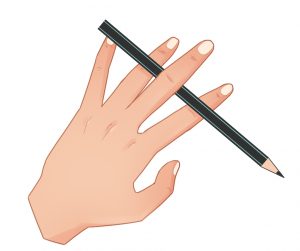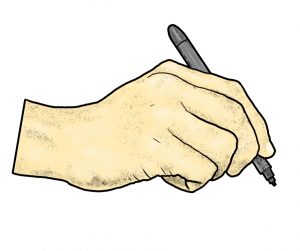How To Improve Your Handwriting: It’s easy to gloss over the fault of having a bad handwriting what with the fact that computers have taken over the traditional means of writing but the ability to make your mark with your own hand remains a beautiful and indispensable skill. With the growing rate at which digital technology has infiltrated nearly every aspect of our lives, writing with our hand rather than a computer or some other digital device seems like learning how to use the left hand at old age.
It is difficult migrating from the quicker and cleaner way of writing that we are accustomed to, to writing in the traditional way like in primary or secondary schools. So, a lot of people see it as a herculean task to write in this method which is understandable considering the above-mentioned reasons.
But all hope isn’t lost. With a little effort here and there your handwriting is sure to improve and you get to flaunt it once again. It’s most likely not going to be an easy feat but you’d be glad you followed it through.

Recommended: How to become a faster reader: 10 Effective Tips
12 Effective Tips To Improve Your Handwriting Skill
1. Pick Your Pen: this is the most important tool in your writing at this point. You have to be sure that you pick the right one if your writing is going to come out clear.

One rule of thumb to keep I’m mind while doing this is that the bigger or wider the girth of the pen is, the rounder and more clearly pronounced your letters or characters will be. So drop those skinny fountain pens and grab some ergonomics pens. Colourful pens for children who are learning writing in primary school may sound like a ridiculous idea but they give the desired results.
Also, ensure that the flow of the ink of the pen is neither too fast or too slow. A pen with medium ink flow is what you’re looking for. This is to ensure flexibility of writing and that way, you’d only have to bother about finessing your craft and not the functionality or not of the basic tool. The right pen is sure to get your letters running across the paper smoothly and without hitches.
2. Choose your paper: this is the next most important tool in writing. You may get the idea that it’s just paper and that any paper will do but this is not the case. Any paper will not do for you. Maybe for someone who is adept at writing by hand but for you who is trying to rediscover your artistry, the kind of paper which you use for training or practice does matter. Ideally, you’d want to ensure that your pad or paper is moderately thin.

A thick pad or paper will have your hand awkwardly angled which will be uncomfortable and make your writing process even more tedious. So you should tear off some leaves from that pad to give you a slimmer one or just buy a slim pad. It will help to ensure that your arm and hand rests comfortably so that you can relax and focus on your writing.
You should invest in lined paper as they enable you to keep track of the flow and direction of your writing. The lines on the paper should however not be too narrow so that they can accommodate large sized letters or characters which is what you should learn with. A typical school writing book will suffice.
3. Examine your writing: Write the alphabet on a piece of lined paper, striving to unite every letter. Concentrate on the letters that are the most difficult for you. Does your Os resemble Qs or the other way around? Are there any letters that aren’t appropriately formed? Make a note of the letters you don’t like and focus on fixing them. Maybe your writing is perpendicular or slanting backward or forwards? Because no one is perfect, there’s a good chance you’ll find a few errors.
So, when you’re looking over your handwriting, look for letters that are too far apart or squeezed together, skewed alignment, Letters with too steep an angle, letter shapes that are difficult to see or perhaps illegible, and letters that are too faint or pressed too hard into the paper.
Also see: How to become a successful lawyer
4. Learn to Hold Your Pen Properly: The perfect form is critical to success in any activity, including handwriting, as it is in many other areas of life. Learn to hold your pen between your thumb, index, and middle fingers when handwriting. The tip of the pen should rest on the knuckle of your index finger or the web of your hand.

For best outcomes, strike the proper balance between grasping too tightly and too loosely. One of the most important factors in improving your handwriting is having a comfortable, relaxed grasp. Many people grip the pen tightly, resulting in a sore hand after a few minutes of writing. We often clutch without even noticing it, so check yourself mentally to make sure you’re still holding the pen gently.
5. Check your posture: Of course, you would be sitting to write and the way you sit is crucial to your writing. You would like to ensure that you sit erect but comfortably with your feet flat on the ground, not crossed. To do this, the chair you are sitting on has to be the right size for you so that your legs are not hanging.

Hanging legs or feet will induce fatigue and stress thus making you to loss interest in writing and taking away your focus. The position of your arm and hand is also material here. Many people tend to curve or arch their arms slightly while writing. This is not advisable as it is likely to disrupt their flow while writing.
You may find yourself tensed up because you haven’t done this in a long while; take a deep breath and relax you will get this right. If your arm or hand is rigid from anxiety, try shaking it until it is floppy or relaxed. Remember too that your arm is to move your finger rather than your wrist.
6. Slow Down: It is okay if you find yourself writing too fast. This is probably because you are used to typing quickly on your computer. When you write your hands will naturally want to match the speed at which you type but you’d need to calm down if you must get your writing right.
There really is no use for writing so fast except you are writing an exam. The slower you write, the better your writing. However you should endeavor to write at a moderate pace as you wouldn’t want to spend the whole day writing a sentence.
Also see: Best time to read and understand effectively
7. Write bigger but get rid of tangling: The thing is that writing larger letters means they’re easier for you to see. Letters that jump out at you are easier to analyze: If you write bigger, it’ll be easier to spot something wrong in your form or consistency. When you’re first starting, make a conscious effort to write slightly bigger letters than normal. When your form and consistency improve—and, thus, your confidence—you can go back to normal letter sizes again.

Tangles occur when ascenders and descenders are not written correctly in handwriting. The former is the part of a letter that rises above the lowercase letter bodies, while the latter is the component that dips below the lowercase letter bodies. It’s important to keep your ascender and descender length moderate because they’ll get tangled up from one line to the next if you make them too long.
8. Check the Heights Of Your Letters: Many people have a good handwriting but their writing is hardly readable because they mismatch the uppercase and lower case letters. Your caps must be distinguishable from your small letters. Practice each letter till you get it right.
9. Avoid Ambiguity: It is useless to have unclear handwriting. Failure to completely close the tops of your letters is one of the worst sources of uncertainty. When this happens, some letters might soon start to resemble letters they aren’t supposed to, such as “a” and “o” becoming “u.” To improve clarity, be meticulous when handwriting your letters.

It’s all too easy to lose sight of the form and connect your letters with curved instead of straight lines. When this happens, the letter shapes might become jumbled, leading to illegible handwriting. To solve this, draw straight lines connecting your letters directly. People can more easily discern your letters with straight-line links.
Must read: Tips to know an intelligent student
10. Copy Handwriting That You Like: If you famz a particular style of writing, get a tracing paper or writing book and imitate the style. By doing so, you improve your own handwriting even if you don’t get exactly that type of handwriting.
11. Start A Diary or Journal: There is a popular saying that practice makes perfect. If you want to be very good at something, keep doing it. You can decide to document the happenings in your life every day or just the important ones or even your imaginations. Just ensure that you write it down by hand. Be regular too as little and often, they say, is best.

Also see: Ways of promoting the human rights and liberties of citizens
11. Persevere: keep at it! A good handwriting doesn’t come at the snap of the fingers. In fact, it may seem like your handwriting got worse at the beginning but with continued efforts, you’d see encouraging results in no distant time. Do not relent or give in to the temptation of using your computer or smartphone only. Liven it up by infusing more characters to your style as you perfect your craft.
Before we conclude on this topic today, I highly recommend you to watch the YouTube video below for more information on how to improve your handwriting.
Also see: Best apps for lawyers and law students
You might doubt the need to improve your handwriting– after all, haven’t computers and smartphones made handwriting more or less superfluous and outdated? That is not completely true. Handwriting remains a primary way to make our mark, some kind of identifying sign, a part of our personal existence impressed in ink in a way it never can be on email.
You write things down rather than type it when you need to remember it. Indeed, there’s a smug happiness that comes with sending and receiving handwritten letters and thank-you cards. By practising the above tips, you are sure to reclaim your bragging rights in handwriting.

Edeh Samuel Chukwuemeka, ACMC, is a lawyer and a certified mediator/conciliator in Nigeria. He is also a developer with knowledge in various programming languages. Samuel is determined to leverage his skills in technology, SEO, and legal practice to revolutionize the legal profession worldwide by creating web and mobile applications that simplify legal research. Sam is also passionate about educating and providing valuable information to people.